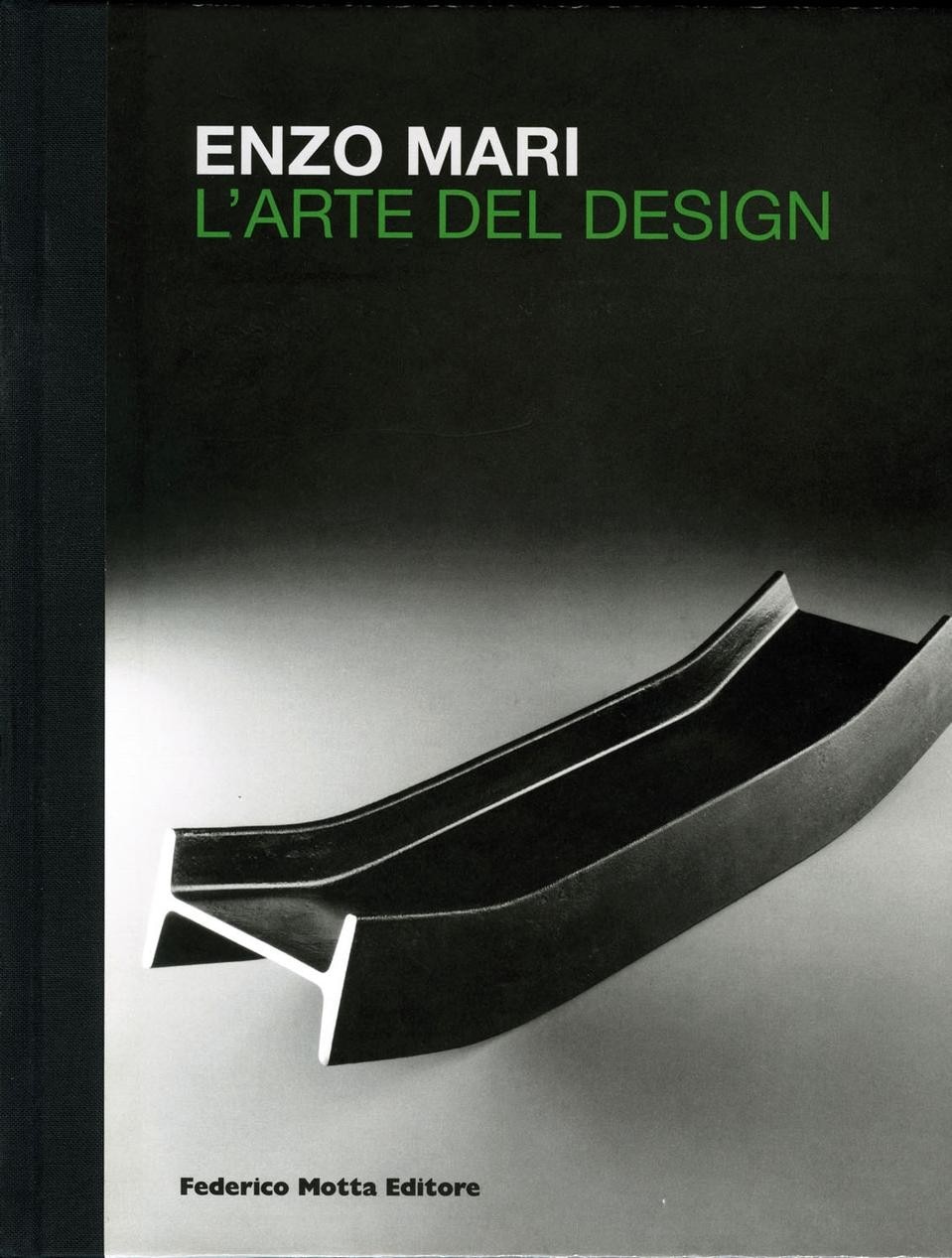L'arte del design. Enzo Mari
Con un testo di Pier Giovanni Castagnoli Federico Motta Editore, Milano 2008 (pp. 222, € 40,00)
When I was asked to review a book on Enzo Mari’s work, I immediately remembered his presentation of the “Dov’è l’artigianato” exhibition in a cold geodesic dome installed in the courtyard of Milan’s Palazzo della Triennale on a rainy afternoon in 1981. His long beard reinforced the image of a man with an anything but jovial nature, almost forbidding, and heightened the detachment between the speaker and we young students who had flocked to hear him. The subjects addressed included a reference to the 1958 “model A” tray from the Putrella series (putrella meaning “girder” in Italian). I remember the passion of his words, spoken almost with the tone of a preacher, on the sweat and toil of the foundry workers producing steel sections, setting the transformation process against alienating work, which is not quantified in its true dimension and is inclined to suppress mankind and his environment. His mouth, almost completely concealed by his charismatic beard, spouted concepts that reasserted the supremacy of the design over the object and a working concept that was closer to craftsmanship than industry. I admit feeling a certain thrill when I saw that the book’s cover had a photograph of the Putrella tray, inspired by the object that is commonly employed in building for its high inertia, and which Enzo Mari had ironically folded at the ends and decontextualised to turn it into a tray for the home. The photograph of this object presents Enzo Mari - L’arte del design, a catalogue of the anthological exhibition on his work held at the Galleria d’Arte Moderna in Turin in the year the city was celebrated as World Design Capital. The approach is certainly an outmoded one, as declared by Pier Giovanni Castagnoli in the introductory essay. Castagnoli presents a host of illustrations that are intentionally published in no chronological order, with the aim of communicating with readers directly “without verbal mediation”. The images range from the graphic results of the work on the analogy between the golden section and musical space to a rudimentary lamp, the product of a design workshop in which Enzo Mari sought to produce objects using simple everyday domestic utensils.
This approach is very different from the catalogues in which the contributions of curators and critics are followed by pictures of the works on display. Instead the book continues with a detailed biography in which the “narrator’s” voice alternates with that of the designer in a whole that embraces both life and works. This is Enzo Mari’s intention for the catalogue and the exhibition, which he curated, once again producing a global project. Together with an updated section on his own bibliography, a list of books written by and about Enzo Mari, the exhibition catalogues, the exhibitions held, the awards received and his teaching experience, the catalogue also illustrates the selection of works in the exhibition chronologically. These objects are also examined with regard to two essential needs that have marked Enzo Mari’s professional career, sometimes with a certain ambiguity: works that stem from the needs of the designer, who researches form or clear contradictions linked to social phenomena (marked with a ?); and works resulting from requests and relationships with manufacturers or other bodies (marked with a ?).
When you read about his projects, you realise his constant commitment to upholding his own ideas. He does this even at the cost of entering into conflict with manufacturers and openly dictating his own terms, as occurred with the classified ad published in Domus in 2004 in which he sought a courageous and humble “young entrepreneur” who knows the difference between design and fashion. I wonder whether Enzo Mari ever found this “entrepreneur”. Certainly, the biographical account published in this catalogue reveals that his whole life has been spent in search of the criterion that would always enable him to manage his own freedom, with choices that have inevitably led to dividing human conduct into the good, right or morally permissible, and the bad and morally unacceptable. In this sense, the photograph of the Putrella tray on the cover of the catalogue, as Pier Giovanni Castagnoli says, is a telling image and “astonishingly emblematic” of Enzo Mari’s thinking.


